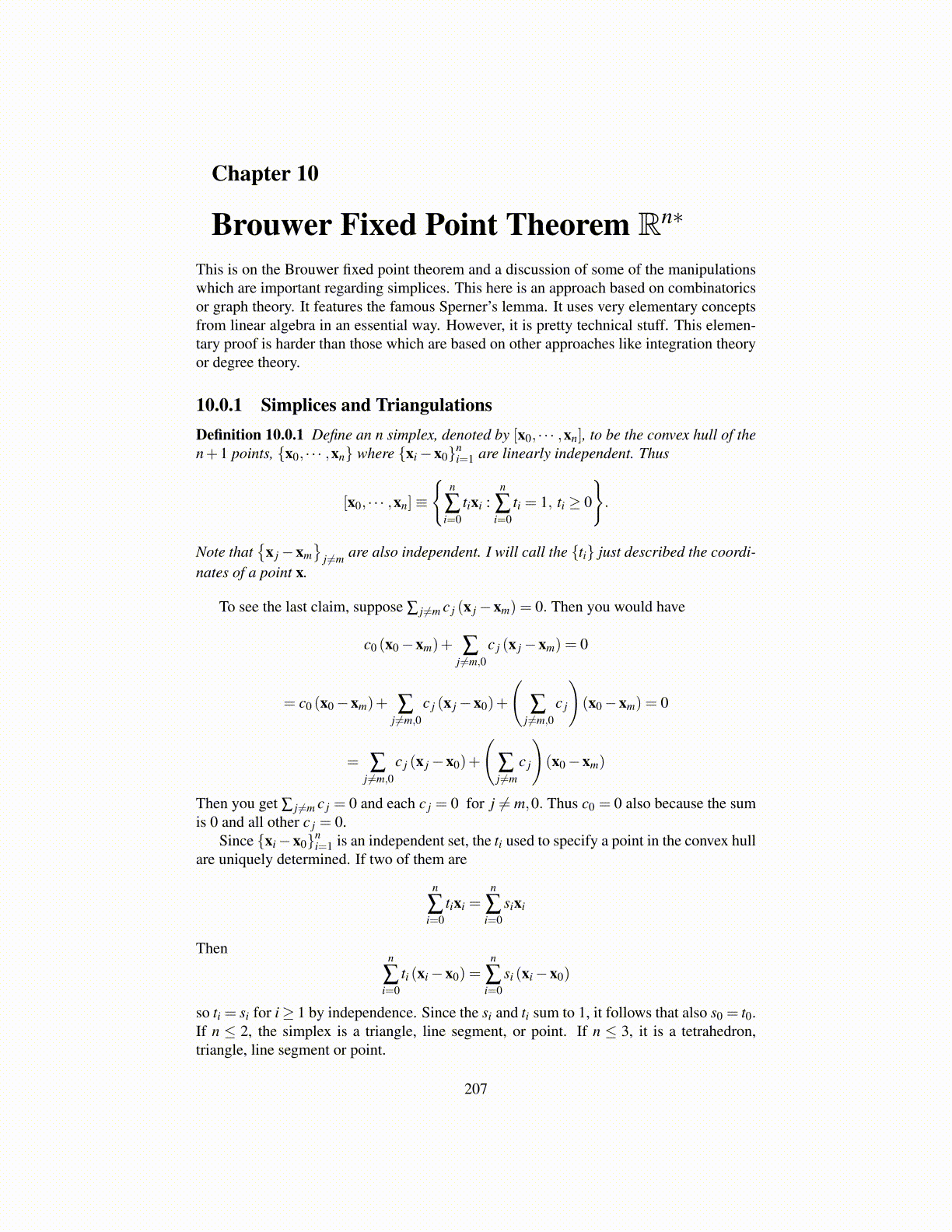
Chapter 10
Brouwer Fixed Point Theorem Rn∗
This is on the Brouwer fixed point theorem and a discussion of some of the manipulationswhich are important regarding simplices. This here is an approach based on combinatoricsor graph theory. It features the famous Sperner’s lemma. It uses very elementary conceptsfrom linear algebra in an essential way. However, it is pretty technical stuff. This elemen-tary proof is harder than those which are based on other approaches like integration theoryor degree theory.
10.0.1 Simplices and TriangulationsDefinition 10.0.1 Define an n simplex, denoted by [x0, · · · ,xn], to be the convex hull of then+1 points, {x0, · · · ,xn} where {xi−x0}n
i=1 are linearly independent. Thus
[x0, · · · ,xn]≡
{n
∑i=0
tixi :n
∑i=0
ti = 1, ti ≥ 0
}.
Note that{
x j−xm}
j ̸=m are also independent. I will call the {ti} just described the coordi-nates of a point x.
To see the last claim, suppose ∑ j ̸=m c j (x j−xm) = 0. Then you would have
c0 (x0−xm)+ ∑j ̸=m,0
c j (x j−xm) = 0
= c0 (x0−xm)+ ∑j ̸=m,0
c j (x j−x0)+
(∑
j ̸=m,0c j
)(x0−xm) = 0
= ∑j ̸=m,0
c j (x j−x0)+
(∑j ̸=m
c j
)(x0−xm)
Then you get ∑ j ̸=m c j = 0 and each c j = 0 for j ̸= m,0. Thus c0 = 0 also because the sumis 0 and all other c j = 0.
Since {xi−x0}ni=1 is an independent set, the ti used to specify a point in the convex hull
are uniquely determined. If two of them are
n
∑i=0
tixi =n
∑i=0
sixi
Thenn
∑i=0
ti (xi−x0) =n
∑i=0
si (xi−x0)
so ti = si for i≥ 1 by independence. Since the si and ti sum to 1, it follows that also s0 = t0.If n ≤ 2, the simplex is a triangle, line segment, or point. If n ≤ 3, it is a tetrahedron,triangle, line segment or point.
207